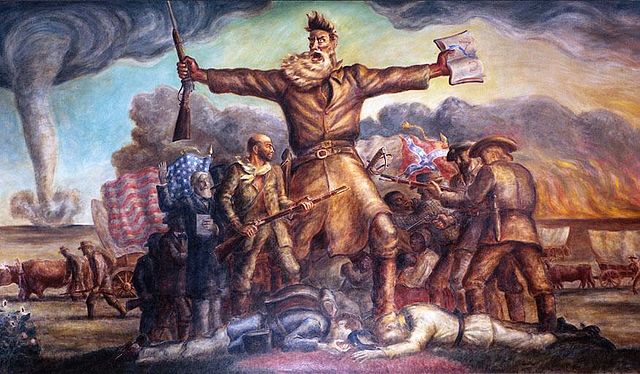HBO’s Watchmen is set in the universe of Alan Moore’s seminal graphic novel. Moore’s central characters are current and former masked vigilantes, anti-heroes, and psychopaths. While Moore’s masterpiece tackles Cold War paranoia, Damon Lindelöf puts white supremacist violence at the heart of his show. The show opens with the razing of Tulsa’s “Black Wall Street” in 1921. In the graphic novel, Nixon is elected to a third term and the U.S. is on the brink of nuclear war with the Soviet Union. In the show, the cultural pendulum swings back the other way, as Robert Redford is elected president and institutes a policy of reparations to African Americans for events like the Tulsa Massacre.
In the graphic novel, Walter Kovacs becomes the vigilante Rorschach when he dons his trench coat and mask decorated with the shifting ink blot of a Rorschach test. Rorschach embodies a zealot’s fervor. He wars on crime with Batman’s conviction, but with no compunction about killing. Rorschach believes that drastic action must be taken against evil and immorality. He follows what 19th-century abolitionists called the “higher law.”
Abolitionists had an awkward relationship to the Constitution. The notorious Three-Fifths Compromise enshrined slavery in the nation’s founding charter. From Lincoln’s Secretary of State William Seward to newspaper editor William Lloyd Garrison to Transcendentalist and pond enthusiast Henry David Thoreau, abolitionists turned to the trope of the higher law to escape this bind. According to this idea, God’s law is higher than man’s. While the Constitution might consider slavery legal, God considers it evil. Although we think of them as being “on the right side of history” today, abolitionists were widely considered fanatics in the 1850s.
Perhaps more than any other abolitionist, Rorschach resembles John Brown. In what became known as the Pottawatomie Massacre, Brown executed five slave holders in Kansas. He also helped fugitive slaves escape to Canada. He felt called by God, like the ancient prophets, to fight the slave power. Leading a small cadre of followers, Brown seized control of the federal armory at Harper’s Ferry in 1859. After a series of bizarre tactical decisions, his plan to spark a widespread slave uprising failed and Brown was eventually executed for treason. Brown became the ultimate martyr to the abolitionist cause. Unlike more pragmatic figures like Lincoln, John Brown waged a sacred crusade against evil. Brown was uncompromising; he rejected gradualism, pragmatism, and half-measures. He felt justified dispensing with the law to follow the Higher Law.

Like Brown, Rorschach becomes a martyr. Dr. Manhattan disintegrates Rorschach because the latter is determined to reveal to the world that Ozymandias staged an alien attack to end the Cold War by creating a common enemy for humanity to fight. Rorschach would rather die than keep quiet about Ozymandias’s plan.
In “The Abolitionist Imagination,” Andrew Delbanco argues that abolitionism left us a troubling legacy. The trope of the higher law and the abolitionist fervor to defeat evil leaves no room for compromise, negotiation, or gradualism. While the logic of the higher law is inflexible, its content is infinitely flexible. The KKK follow a higher law diametrically opposed to the one cherished by abolitionists, but both groups justify violence for the sake of their cause.
Inspired by Rorschach, the Seventh Kavalry are a fictionalized version of the Klan. The Seventh Kavalry are terrorists who believe they are carrying on Rorschach’s legacy by killing cops. Lindelöf seems to be satirizing misguided fans’ love for Rorschach. This is a world of masks: like super heroes and super villains, the Kavalry are the eerie doppelgangers of the masked cops they fight.
The show’s third episode features a fascinating encounter between Angela Abar, an undercover cop known as Sister Night, who survived an assassination attempt by the Kavalry, and Laurie Blake, who has forsaken her identity as the heroine Silk Specter in favor of becoming an FBI agent on the anti-vigilante task force. Laurie asks Angela, “What’s the difference between a masked cop and a vigilante?” When Angela replies that she doesn’t know, Laurie says, “Me neither.” Laurie has totally disavowed her past as a costumed heroine and now sees masked vigilantes as dangerous, even when their intentions are good.
